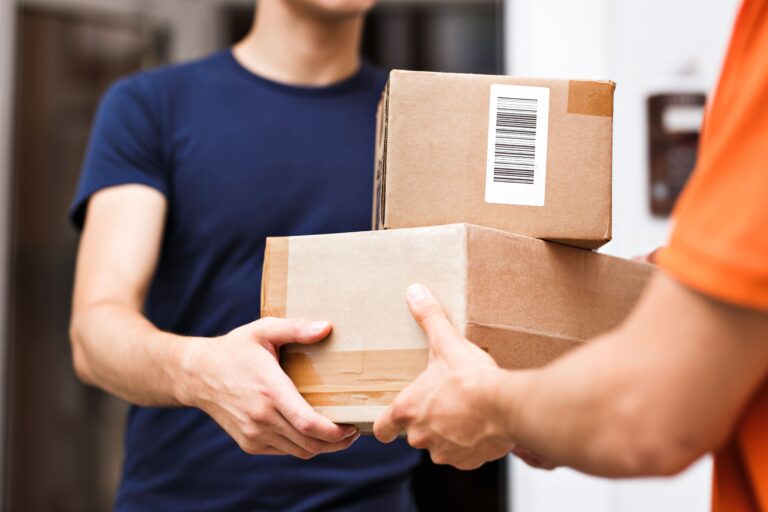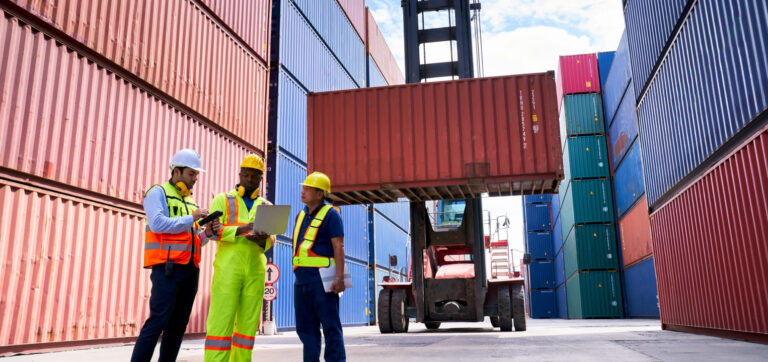Why barcodes matter in logistics
Barcodes play an important role in smooth, efficient parcel delivery. They are an essential tool for tracking and managing the vast flow of goods through the supply chain.
By encoding data about a package – such as its origin, destination, and handling instructions – barcodes enable automatic identification and data capture (AIDC). This not only accelerates the sorting process, but also minimizes the risk of human error. Barcoding thus ensures that packages are delivered correctly.
Moreover, barcodes facilitate real-time tracking of shipments, allowing both logistics providers and customers to monitor the journey of a parcel from dispatch to delivery. This transparency builds trust and enhances customer satisfaction.
Because they improve efficiency, accuracy, and visibility, barcodes have become indispensable in the logistics industry.
Laser- vs. Image-based barcode scanners in the post, parcel, and delivery sector
When it comes to picking the right barcode scanner for logistics, understanding the difference between laser-based and image-based scanners is crucial.
Laser scanners, the traditional choice, use a laser beam to read barcodes, decoding the data based on the reflected pattern. While laser scanners are effective for straightforward scanning tasks, they can struggle detecting damaged or poorly printed barcodes. They are also limited when it comes from scanning barcodes at a distance or at an angle.
Unlike laser scanners, image-based scanners use a camera to capture an image of barcode, and software to decode the information. This technology allows for greater flexibility, making it a breeze to scan barcodes from a variety of angles and distances.
What’s more, image-based scanners can read multiple barcode formats. Apart from traditional barcodes, they can also decode modern 2D types codes as the QR Code, making them more versatile.
Taking into account these differences, image-based scanning solutions offer superior performance for logistic applications – especially when powered by advanced software like Scanbot SDK’s.
They not only ensure higher accuracy and efficiency, but also provide the flexibility to adapt to different operational needs. This makes them particularly suited to the dynamic environment of logistics, where real-time tracking, efficiency, and the ability to handle a wide range of barcode types are paramount.
Leveraging smartphones equipped with a scanner SDK, logistics providers can enhance parcel tracking, streamline supply chain processes, and ultimately improve customer satisfaction by ensuring timely and accurate delivery.
Which barcodes are used in the post, parcel, and delivery industry?
Several types of barcodes are utilized within the logistics and delivery sector, each serving specific functions that contribute to smooth parcel handling. Here are five common examples:
Universal Product Code (UPC)
Primarily used in retail to identify product listings, UPC barcodes also find application in package tracking. The standardization of UPCs allows for uniformity in tracking consumer goods, which in turn facilitates efficient handling and distribution along the logistics chain.
Code 128
This versatile barcode can encode all ASCII characters, making it ideal for storing detailed information about shipments. Code 128 Barcode is widely used for packaging and shipping labels due to its compact size and high reliability, which is critical for ensuring that parcels are properly managed throughout the delivery process.
QR Code
Quick Response (QR) Codes have gained significant traction because of their ability to hold a large amount of information in a small, square format. In logistics, QR codes can contain detailed data about a package’s route, delivery instructions, and even the recipient’s contact information. This facilitates a more interactive and transparent delivery process, improving the customer experience.
Data Matrix
Similar to QR Codes but capable of holding information even more compactly, Data Matrix Codes are especially useful for marking small items or components. Their applications in logistics include item identification, tracking, and ensuring the authenticity of goods, which is particularly important for high-value or sensitive shipments.
GS1-128
Also known as UCC-128, GS1-128 barcodes use so-called application identifiers to include additional data such as serial numbers, expiration dates, and batch numbers within a barcode. This allows for comprehensive tracking and inventory management, making GS1-128 an essential tool for enhancing visibility and control across the supply chain.
The role of postal barcodes in modern delivery systems
Besides the above-mentioned barcode types, which have a variety of applications, there are symbologies tailored to the needs of postal services.
These specialized barcodes enable precise tracking and sorting of mail items.
POSTNET and PLANET were two early postal barcodes enhancing mail delivery systems. Both codes have since been replaced by the IMb (Intelligent Mail barcode), developed by the United States Postal Services (USPS). The IMb encodes more detailed information, facilitating automated sorting and tracking.
Apart from the IMb used in the United States, there are other postal barcodes, for instance the RM4SCC (Royal Mail 4-State Customer Code), the Australia Post 4-State Customer Code, the Japan Post 4-State Customer Code, and the KIX.
These specialized barcode symbologies not only improve accuracy and efficiency, but are also the basis of a transparent communication channel between postal services and customers, ensuring satisfaction and building trust in postal and delivery operations.
Conclusion
Barcodes play a crucial role in enhancing efficiency, accuracy, and transparency in the logistics and delivery industry. They enable seamless package tracking, automated data capture, and precise sorting, ultimately leading to improved customer satisfaction. They are an indispensable tools for modern logistics, contributing to the smooth flow of goods and bolstering customer trust in delivery services.







